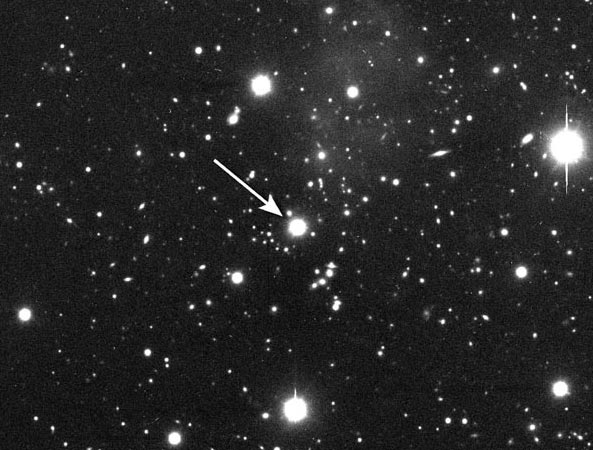Explanation: A quasar slightly depleted of a specific color of light may indicate that our universe is filled with massive amounts of ionized hydrogen. Light from QSO H1821+643, pictured above, comes to us from about a quarter of the way across the visible universe. Detailed analysis now indicates that a tiny amount of this quasar's light was absorbed by intervening ionized oxygen. Astronomers intuit that this oxygen is surely accompanied by much more abundant ionized hydrogen, which would otherwise be invisible. The oxygen is thus thought to be the tip of a tremendous iceberg, indicating a universe filled with proton and electron clouds so vast they likely exceed the mass of all the stars combined. Still, this is only a small part of the long-sought dark matter astronomers have been searching for. Our universe is thought to be filled with much more abundant, much stranger forms of dark matter.
1999 2000 2001 2002 2003 2004 2005 2006 2007 2008 2009 2010 2011 2012 2013 2014 2015 2016 2017 2018 2019 2020 2021 2022 2023 2024 2025 |
Yanvar' Fevral' Mart Aprel' Mai Iyun' Iyul' Avgust Sentyabr' Oktyabr' Noyabr' Dekabr' |
NASA Web Site Statements, Warnings, and Disclaimers
NASA Official: Jay Norris. Specific rights apply.
A service of: LHEA at NASA / GSFC
& Michigan Tech. U.
|
Publikacii s klyuchevymi slovami:
universe - hydrogen - ionized hydrogen - dark matter - quasar - Vselennaya - temnoe veshestvo - temnaya materiya
Publikacii so slovami: universe - hydrogen - ionized hydrogen - dark matter - quasar - Vselennaya - temnoe veshestvo - temnaya materiya | |
Sm. takzhe:
Vse publikacii na tu zhe temu >> | |
